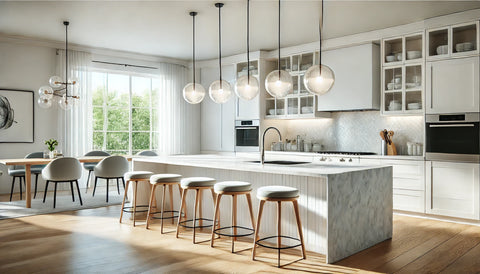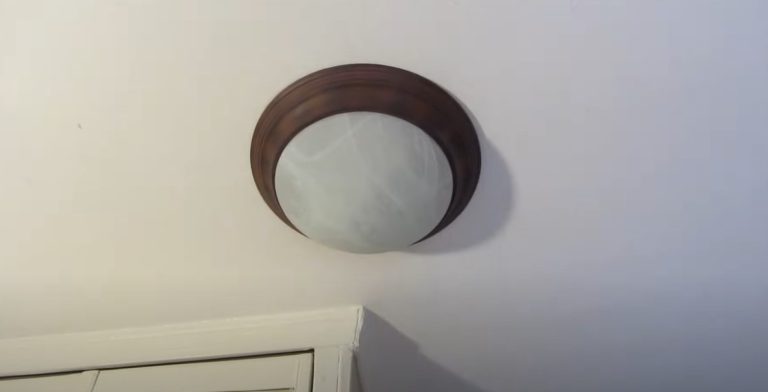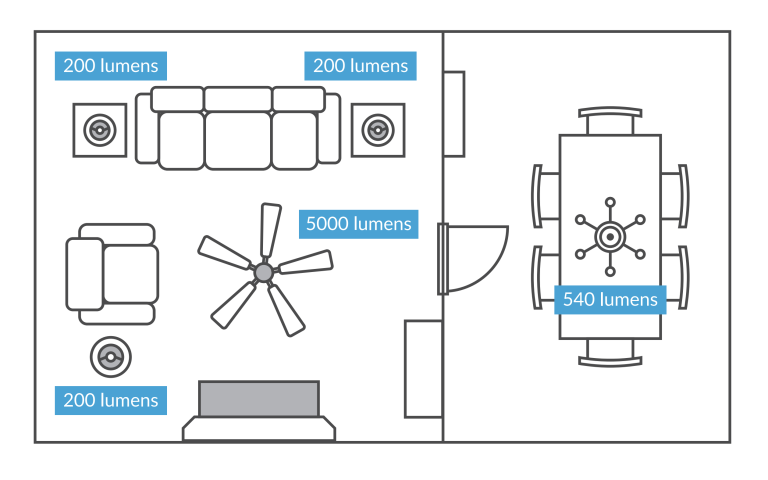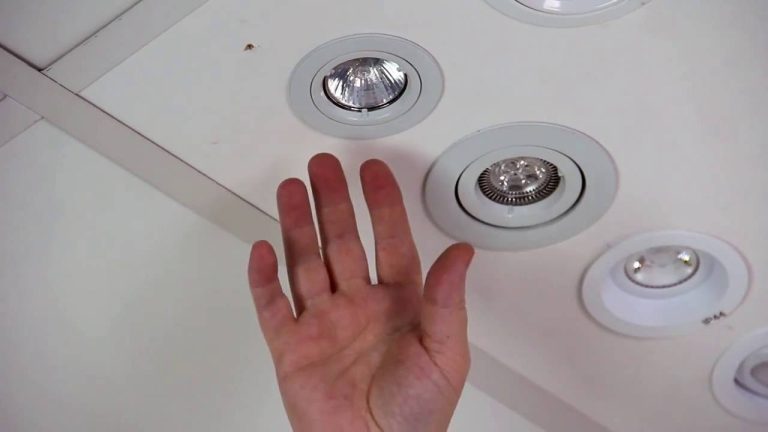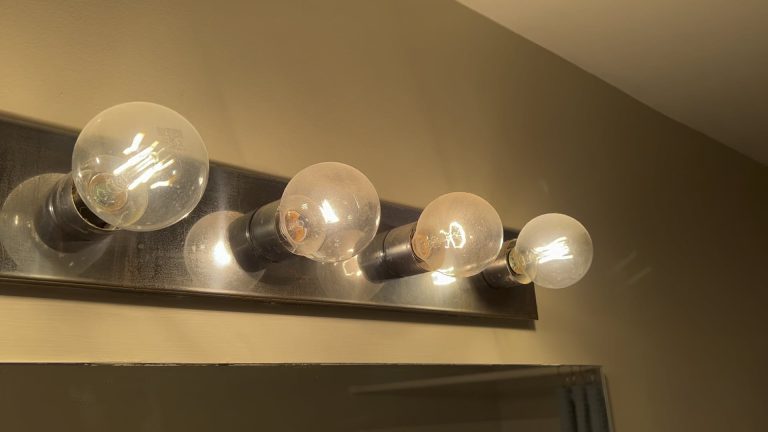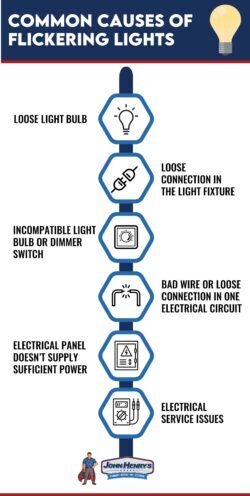Should Pendant Lights Be Centered to Kitchen Island? Tips
Should pendant lights be centered to kitchen island? Yes, pendant lights should be centered over the kitchen island to ensure balanced lighting and visual symmetry. Proper centering enhances both functionality and aesthetics, providing even illumination for tasks while creating a cohesive look in the kitchen design. Always align them with the island’s centerline for best results.
You’re not alone in this lighting dilemma. Many homeowners face the same question: should pendant lights be centered to the kitchen island? Imagine walking into your kitchen and feeling an immediate sense of balance and harmony. Or perhaps, the allure of a trendy, off-centered arrangement captures your imagination, sparking conversation at your next dinner party.
Lighting isn’t just functional; it’s a statement. This decision is more than just aesthetics—it can influence the entire ambiance of your space. As you ponder this, let’s explore the impact of pendant light placement. We’ll uncover design secrets and practical tips to guide you to a decision that reflects your style and enhances your home’s heart. Stick around, and we’ll help you illuminate the path to a kitchen you’ll love even more.
Should Pendant Lights Be Centered to Kitchen Island?
Importance Of Pendant Light Placement
Pendant lights add style and function to a kitchen island. Proper placement ensures balanced lighting and enhances aesthetics. Centering them over the island creates a harmonious look, improving visibility for tasks.
Proper placement of pendant lights over your kitchen island can transform the entire ambiance of your space. It’s not just about aesthetics; it’s about functionality and comfort too. Good lighting can make your kitchen tasks easier and create a welcoming environment for family and friends.
Understanding The Balance Of Light And Space
Have you ever walked into a kitchen and felt something was off? Often, it’s the lighting. Placing pendant lights correctly can balance the light across your island, ensuring even illumination. This balance can prevent harsh shadows and create a harmonious look that complements your kitchen design.
Enhancing Functionality
Pendant lights are not just decorative; they serve a crucial purpose. Imagine chopping vegetables in a poorly lit area—it’s neither safe nor efficient. Properly centered pendant lights provide direct light where you need it most, making your kitchen tasks easier and safer.
Creating Visual Interest
A well-placed pendant light can be a statement piece. Consider how a beautifully designed light fixture can draw the eye and add character to your kitchen. By centering your pendants, you ensure that they catch attention without overwhelming other design elements.
Consideration For Spacing And Size
Think about the size of your kitchen island and the height of your ceiling. Are your pendants too close together, or are they spaced just right? Ensuring the right spacing can prevent your kitchen from feeling cluttered, while the right size can enhance the visual flow of the room.
Adapting To Your Lifestyle
Every kitchen serves a different purpose, depending on the household. Do you use your island for homework sessions or as a casual dining space? The placement of your pendant lights should reflect your lifestyle, adapting to both everyday use and special occasions. By thinking through these aspects, you ensure your kitchen is not only a cooking space but a true heart of your home. What changes could you make to improve your kitchen lighting today?

Credit: www.thestonybrookhouse.com
Visual Balance In Kitchen Design
Visual balance in kitchen design is crucial for creating a harmonious and inviting space. When designing your kitchen, every element should work together to create a cohesive look. One area where balance is essential is the placement of pendant lights over your kitchen island.
Should Pendant Lights Be Centered To Kitchen Island?
Centering pendant lights over your kitchen island can enhance visual symmetry. Imagine walking into a kitchen where lights are scattered randomly. It would feel chaotic, right? Centering the lights can bring a sense of order and calmness.
However, centering isn’t always the only option. Consider the size and shape of your island. If you have a long island, you might need multiple lights evenly spaced to achieve balance rather than focusing solely on the center.
Achieving visual balance doesn’t mean everything needs to be perfectly centered. It’s about creating a pleasing look that feels right to you. Ask yourself, does the lighting complement the island’s shape and size? Does it enhance the overall design?
If your kitchen island is asymmetrical, centering pendant lights might not be the best choice. You might opt for staggered lighting to add dynamic interest. This can create a unique visual appeal while maintaining balance.
Practical And Actionable Insights
Before deciding on the placement of your pendant lights, consider their function. Are they for task lighting or ambient light? Task lights should be directly over work areas, while ambient lights can be more flexible.
Also, think about your daily routine. Do you often gather around one end of the island? If so, you might want more lighting in that area to highlight activity zones.
Thought-provoking Questions
As you plan your kitchen design, ponder this: What feeling do you want to evoke when someone enters the room? Is it a sense of order or creative flair?
How can you use lighting to enhance the mood and functionality of the space? These questions will guide you to a design that’s both practical and visually appealing.
Remember, the key is to find what works best for your space and lifestyle. Balance doesn’t mean symmetry; it means finding harmony in design elements that reflect your personal style.
Factors Affecting Pendant Light Position
Choosing the position of pendant lights over a kitchen island involves careful consideration. Getting it right can enhance functionality and style, while a misstep can disrupt the balance of your kitchen design. Here, we explore the factors that influence where you should place those glowing beauties.
Size Of The Kitchen Island
The size of your kitchen island significantly affects pendant light placement. A larger island might require multiple lights to ensure adequate illumination. Think about how you use the island; if it’s your main prep area, you’ll want even lighting across the surface.
In a smaller kitchen, one or two pendants might be enough. You don’t want the lights to overpower the space. Balance is key to maintaining a harmonious look.
Height Of The Ceiling
Ceiling height can dictate how low or high the pendants should hang. A high ceiling allows for longer pendants, creating a dramatic effect. But if your ceiling is lower, consider shorter pendants to avoid crowding the space.
When I renovated my kitchen, I underestimated how much the ceiling height would impact the vibe. I adjusted the length, and suddenly, the room felt more open. Are you maximizing your ceiling’s potential?
Purpose Of The Lighting
Determine what you need from the pendant lights. Is it to provide task lighting for cooking and chopping? Or are they more for ambiance during dinner parties?
In my home, pendant lights serve dual purposes. I found that dimmable bulbs work wonders, allowing flexibility between task and mood lighting. How do you want your space to feel during different times of the day?
Overall Kitchen Design
Your kitchen’s design influences pendant light placement too. Consider the color scheme, style, and other fixtures. Pendant lights should complement, not clash with, existing elements.
When planning my kitchen remodel, I found that a rustic light fixture didn’t match my modern cabinetry. Coordinating styles made all the difference. What story does your kitchen tell?
Proximity To Other Light Sources
Think about the location of other lights in your kitchen. Are there recessed lights or under-cabinet fixtures nearby? Ensure your pendants don’t create unwanted shadows or compete with existing light sources.
In my kitchen, I had to adjust the placement of pendant lights to avoid overshadowing the island. It’s amazing how a small shift can change the entire lighting dynamic. Have you considered how your lights interact with each other?
Deciding where to place pendant lights over your kitchen island is more than just a design choice; it’s about creating a space that works for you. Each factor plays a role in achieving the perfect balance of style and function. What will your pendant lights say about your kitchen?

Credit: www.pinterest.com
Measuring For Centered Lighting
Centering pendant lights above a kitchen island enhances symmetry and focus. It creates balanced lighting for tasks and ambiance. Proper placement ensures the island’s design stands out, adding visual appeal to the kitchen space.
When planning to install pendant lights over your kitchen island, it’s crucial to measure correctly for centered lighting. Proper measurement ensures that your kitchen island becomes a focal point, perfectly lit to enhance both functionality and style. The process might seem simple, but a few key considerations can make all the difference in achieving a balanced and visually appealing setup.
Determine The Island’s Center
Start by finding the center of your kitchen island. Use a tape measure to find the midpoint along the length and width. Mark this spot as your reference point. This ensures your pendant lights are directly aligned with the island’s center.
Consider The Number Of Pendants
Decide how many pendant lights you wish to install. Two or three pendants are common for most kitchen islands. If you’re using multiple pendants, distribute them evenly across the island. This maintains a harmonious look and prevents crowding or awkward spacing.
Account For Pendant Size And Spacing
Choose pendant lights that suit your kitchen’s scale. Large pendants need more space; smaller ones can be closer together. Maintain at least 30 inches between the pendants to ensure adequate illumination and aesthetic balance.
Measure The Distance From The Countertop
Hang pendants about 30 to 36 inches above the countertop. This height provides enough clearance while ensuring the light is effective. Measure from the island’s surface to the bottom of the pendant for precision.
Test The Lighting
Before finalizing the installation, test the placement with temporary hooks or tape. This allows you to visualize the lighting effect and adjust if necessary. Ask yourself if the light covers the entire island and if shadows fall where you need light the most. By following these steps, you ensure your kitchen island is well-lit and visually appealing. Have you ever considered how the placement of lighting impacts your space? Share your thoughts or experiences in the comments below!
Creative Alternatives To Centering
Pendant lights don’t always need to be centered over a kitchen island. Creative placement can add visual interest. Offset designs or varied heights provide unique flair, enhancing the kitchen’s style.
Pendant lights are a popular choice for kitchen islands, but they don’t always have to be centered. You can create a unique look by exploring creative alternatives. Unleash your imagination and consider different placements that add flair and function to your kitchen space. The possibilities are endless, and they can make your kitchen both stylish and practical.
Offset Placement
Positioning pendant lights slightly off-center can add a modern twist. This approach can help distribute light more evenly across the island. It’s a perfect option if your island serves multiple purposes, like cooking and dining.
Cluster Arrangement
Think about grouping smaller pendant lights in a cluster. This technique creates a focal point and adds visual interest. It’s especially effective for adding depth and character to a minimalist kitchen.
Layered Lighting
Mixing different types of lighting can enhance your kitchen’s ambiance. Combine pendant lights with recessed lighting or under-cabinet lights. This layered approach allows for flexibility in illumination and mood setting.
Asymmetrical Design
Embrace asymmetry by using pendants of varying sizes or shapes. This adds a dynamic element to your kitchen, making it stand out. Asymmetrical designs can also reflect your personal style and creativity.
Linear Alignment
Consider aligning pendants in a linear fashion across the island. This creates a sleek and organized appearance. It’s a great way to complement a long, rectangular island and maintain a clean look.
Utilizing Corner Spaces
If your island is near a corner, try placing pendants in that area. This can brighten up underutilized spaces and provide targeted lighting where it’s needed most. It’s a practical solution for maximizing your kitchen’s functionality. Have you ever thought about how pendant lights can transform your kitchen’s look and feel? Trying these creative alternatives might be the change you need to refresh your space. Experiment with these ideas and find what works best for your kitchen’s unique layout and your personal taste.

Credit: morsale.com
Frequently Asked Questions
Why Center Pendant Lights Above A Kitchen Island?
Centering pendant lights ensures even light distribution. It creates visual balance. The island becomes the focal point. Enhances functionality and aesthetics.
How Many Pendant Lights For A Kitchen Island?
Consider island size and light spread. Two to three pendants usually fit well. Ensure adequate illumination. Visual harmony is key.
Can Pendant Lights Be Off-center?
Yes, they can. Off-center creates unique design. Adds character. Balance with other elements. Ensure sufficient light coverage.
Conclusion
Centering pendant lights over a kitchen island enhances balance and harmony. It creates an inviting space for cooking and socializing. Consider island size and light fixture dimensions. This ensures proper alignment. Even spacing enhances visual appeal. Brightens the workspace effectively.
A centered design complements the kitchen’s aesthetics. Personal preferences matter too. Choose what feels right for your space. Consult a lighting expert if unsure. They can guide your decision. Proper lighting transforms kitchen functionality. Creates a welcoming atmosphere. Balance is key.
Centering isn’t mandatory but often ideal. Make choices that suit your style and needs. Enjoy your well-lit kitchen!
Related Article

